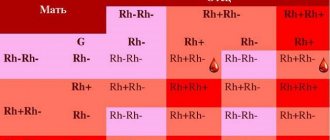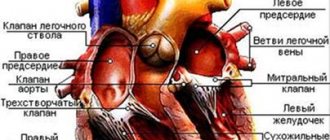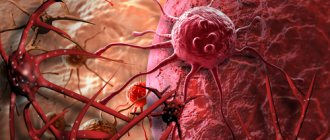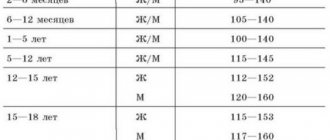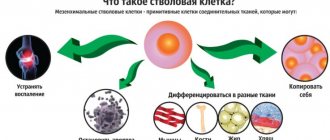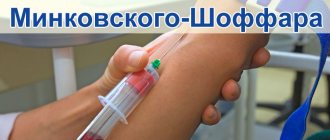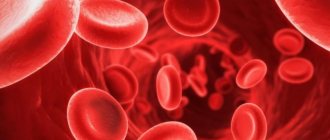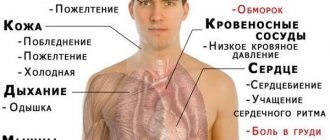WhatDiseases > Heart, blood vessels, blood > Anemia > Folate deficiency anemia
One of the diseases that has become increasingly common lately is folate deficiency anemia. Pathology can occur after exposure to unfavorable external factors - insufficient consumption or complete absence of vitamin B9 (folic acid) and vitamin B12 in the diet. Just a few months of an unbalanced diet is enough for the disease to develop. The above reasons are not the only ones.
Folate deficiency anemia
What is folate deficiency anemia
Accompanied by a lack of folic organic compound. Pathology may occur due to poor nutrition or concomitant disease. Symptoms depend on the severity of anemia.
Anemia itself is quite easy to diagnose. To determine the cause of the deviation, all available research methods are used. Based on the diagnostic results, a treatment plan is drawn up. After treatment, a re-examination is carried out.
More about anemia in the video:
Hemolytic disease of the newborn, causes of development, symptoms of the disease, severity.
Hemolytic disease of the newborn is a disease that occurs as a result of a conflict between the red blood cells of the mother and child, which have incompatible blood group or Rh factor antigens. In this case, the mother's antibodies penetrate the fetus through the placenta and cause the destruction of the child's red blood cells. The severity of hemolytic disease of the newborn depends on the amount of maternal antibodies that cross the placenta to the fetus. Therefore, pregnant women with negative Rhesus blood factor regularly undergo blood tests for the presence of just such antibodies. If antibodies are detected, then appropriate treatment is necessary. A child with hemolytic disease of the newborn is born with edema, ascites, a high-pitched cry and a high content of immature red blood cells (erythroblasts, normocytes and reticulocytes). Hemolytic disease of newborns is classified by severity into mild, moderate and severe according to the amount of hemoglobin and bilirubin in the blood.
| Indirect bilirubin content, g/l | ||
| Lightweight | Above 150 g/l | Less than 86 g/l |
| Average | 100 – 150 g/l | 86 – 140 g/l |
| Heavy | Below 100 g/l | More than 140 g/l |
Currently, prevented by monitoring the presence of antibodies in the mother. If antibodies are detected in the mother, treatment is carried out in a hospital. At the same time, an infusion of anti-Rhesus immunoglobulins is performed.
Signs of non-immune hemolytic anemia, laboratory symptoms
Non-immune hemolytic anemia has the following symptoms - jaundice, enlarged liver and spleen, increased concentration of bilirubin in the blood, dark color of urine and feces, fever, chills, pain, urine the color of “meat slop”. The blood picture shows the presence of red blood cells of various shapes and sizes , reticulocytosis up to 30% and higher, reduced number of leukocytes and platelets. Such anemias in themselves do not require separate and special treatment , since first of all it is necessary to remove the factor that causes this anemia (snake venoms, heavy metal salts, etc.).
Anemia caused by impaired blood formation is divided into two large groups - deficiency anemia and hypoplastic anemia . Deficiency anemia is associated with a deficiency of elements necessary for hematopoiesis. Deficiency anemias include iron deficiency anemia, iron refractory anemia, B12 deficiency and folate deficiency. Hypoplastic anemias are caused by the death of progenitor cells in the bone marrow. Hypoplastic anemia can be hereditary (Fanconi anemia, Estren-Dameshik anemia, Blackfairn-Diamond anemia) and acquired. Acquired hypoplastic anemia develops either on its own due to an unknown cause, or against the background of an existing disease - radiation sickness, infections, damage to the immune system.
Of greater interest to most people are deficiency anemias, which can occur in almost anyone. Therefore, we will dwell in more detail on this type of anemia.
Causes
Pathogenesis is associated with several factors. The main reason is vitamin B9 deficiency or problems with its absorption. Deficiency can develop due to poor nutrition. Malabsorption may be due to:
- diseases of the gastrointestinal tract;
- taking certain medications;
- pregnancy;
- chronic alcohol intoxication.
- Crohn's disease
Note! During diagnosis, the cause of anemia is determined. Then actions are aimed at eliminating it.
Thalassemia - causes, symptoms, diagnosis of the disease
Thalassemia - causes of the disease
Thalassemia occurs due to an abnormality in the rate of hemoglobin formation. Such immature hemoglobin is not stable, as a result of which it precipitates in erythrocytes in the form of inclusions - bodies, and the entire erythrocyte takes on the appearance of a target cell. Thalassemia is a severe hereditary disease that cannot be cured, but only its manifestations can be alleviated.
Symptoms of Thalassemia
- pale, jaundiced skin
- deformation of the skull bones
- physical and mental underdevelopment
- Mongoloid eye shape
- disorders of bone structure that are visible on x-rays
- enlarged liver and spleen
- hemosiderosis, due to which the skin acquires an earthy-green tint
Diagnosis of thalassemia
Target-shaped erythrocytes, an increased number of reticulocytes, a decrease in the concentration of hemoglobin to 20 g/l, and erythrocytes to 1 T/l are detected in the blood. A decrease in the number of leukocytes and platelets is also observed. Unfortunately, thalassemia cannot be treated and it is only possible to alleviate its course . For this purpose, transfusions of red blood cells or blood substitutes are used.
So, we have looked at the main types of hereditary hemolytic anemias that are transmitted from parents to children. Let's move on to consider acquired hemolytic anemias that arise due to the presence of a provoking factor.
Acquired hemolytic anemia, immune and non-immune anemia
First of all, it should be noted that acquired hemolytic anemias can develop with the participation of the immune system (immune) or without its participation (non-immune). Anemias that develop with the participation of the immune system include viral, syphilitic anemia and hemolytic disease of the newborn. Non-immune hemolytic anemia is Marchiafava-Micelli disease, as well as anemia resulting from long marching, poisoning with alcohol, acids, salts of heavy metals, poisons of snakes, insects and mushrooms. With burns covering more than 20% of the body surface, vitamin E deficiency and malaria, non-immune hemolytic anemia also develops.
Symptoms
Folate deficiency anemia is accompanied by classic manifestations. General weakness occurs and ability to work decreases.
Weakness, dizziness, tinnitus
Noticeable weakness occurs when the number of red blood cells falls below normal. Dizziness occurs when suddenly rising from a chair or bed due to the onset of oxygen starvation of the brain. Tinnitus is not constant, occurs periodically and intensifies as the disease progresses.
Dyspnea, palpitations and tachycardia
Anemia is accompanied by increased heart rate. When the level of red blood cells is very low, shortness of breath may occur. It often makes itself felt during an attack of palpitation (increased irregular heartbeat).
Pale skin
Pale skin color is a constant sign. A decrease in hemoglobin worsens the condition, which affects a person’s appearance. If a painful type is detected, it is advisable to undergo an unscheduled examination in a hospital.
Dry skin, brittle nails and hair
Lack of folic vitamin acid and anemia lead to dry skin. Dryness is accompanied by flaking and slight itching. Hair becomes brittle and falls out. Nails become deformed at the slightest impact.
Dryness affects not only the skin, but also mucous membranes
These manifestations disappear after adjustment and restoration of the level of red blood cells.
Anorexia
Sometimes there is a complete lack of appetite. Anorexia is usually considered a complication of anemia. Secondary anorexia disappears after the cause of its occurrence is eliminated.
Feeling of heaviness and pain in the abdomen
Anemia itself rarely causes abdominal pain or heaviness. These manifestations can appear with gastrointestinal pathologies. If, when collecting an anamnesis, a person complains of pain, a detailed examination of the abdominal cavity is required.
Constipation and diarrhea
If a person experiences alternating diarrhea and constipation, he may have irritable bowel syndrome. With this pathology, anemia may develop. Medications and psychotherapy can be used to treat IBS.
Glossitis
Glossitis is a characteristic manifestation of folate deficiency anemia and consists of redness of the tongue. Redness occurs due to inflammation. Manifested by speech difficulties and gaps in chewing.
It is important to know! Glossitis can occur as an independent disease. Having discovered an inflamed tongue, the doctor will conduct a diagnosis.
Syphilitic and viral immune hemolytic anemia
Syphilitic and viral immune hemolytic anemias manifest themselves in the same way. These types of anemia are secondary, that is, they occur against the background of an existing disease - syphilis or a viral infection. These people experience fever, chills, back pain, weakness, shortness of breath, blood in the urine, enlarged liver and spleen. The concentration of bilirubin and the number of reticulocytes in the blood increase, but the hemoglobin content may be normal or slightly reduced, and round-shaped red blood cells appear.
Treatment for these types of anemia is usually not required.
Diagnostics
To diagnose folate deficiency of red blood cells, laboratory and instrumental research methods are used. A specific list of tests is selected by the doctor based on the results of the initial examination.
General blood analysis
A general examination of blood material allows one to determine the basic parameters of the blood and determine the degree of anemia.
Blood chemistry
Biochemistry allows you to obtain information about the amount of various microelements in the blood. Detects deficiency of organic folic acid, iron, vitamin B12. Allows you to find out about the current level of liver enzymes in the serum and many other important parameters.
Urine examination
Urine is studied in laboratory conditions to exclude hemolytic anemia, in which red blood cells are destroyed due to negative factors or predisposition. Active hemolysis leads to the appearance of hemoglobin in the urine.
Folic acid test
As the folate deficiency condition is treated, you will need to test the serum for acid several times.
Bone marrow puncture
A punctate study is usually required if aplastic anemia is suspected, in which the hematopoietic function of the bone marrow is inhibited. In case of usual deficiency of soluble folic acid, puncture is not performed.
Parasitological examination of stool
The test is used to detect blood impurities (large amounts of red blood cells in excrement). The appearance of red blood cells may indicate active hemolysis within the body.
To obtain an accurate result, you need to collect the material correctly
Also, feces are sometimes donated to rule out parasitic diseases, which can also lead to low red blood cell counts. If a helminthic infestation is detected, an antiparasitic course is drawn up.
Special blood tests
Highly specialized blood serum tests are carried out as prescribed by a doctor. The amount of not only water-soluble folic acid is detected, but also other vitamins and microelements that play a role in the hematopoietic process.
Radiography
During an in-depth examination, a chest x-ray is performed. To exclude tuberculosis and cancer.
Fibroesophagogastroduodenoscopy
If gastrointestinal diseases are suspected, gastroscopy is performed. Allows detailed examination of the walls of the esophagus, stomach and duodenum. Fibroesophagogastroduodenoscopy - examination of the mucous membrane of the stomach and intestines using a gastroscope.
Gastroscopy is the most accurate way to examine the stomach
The doctor prescribes an examination using this method only if there is a suspicion of a connection between B9 acid deficiency and an intestinal or stomach disease.
Preventive actions
Treatment of folate deficiency anemia is not difficult, but it would be much wiser to prevent its development . As part of the prevention of this type of anemia, doctors recommend:
maintain a nutritious diet;- for preventive purposes, take folic acid (this is especially important during pregnancy), but only after consulting a doctor;
- drink alcoholic beverages extremely moderately;
- take medications only in those doses prescribed by the attending physician;
- Chronic diseases are not only diagnosed in time, but also treated.
Folate deficiency anemia does not pose a threat to human life, but such disorders in the body can lead to the development of undesirable consequences. When the first signs of this disease appear, you should seek qualified medical help, undergo treatment and lead a full, active lifestyle again.
Tsygankova Yana Aleksandrovna, medical observer, therapist of the highest qualification category
8, total, today
( 39 votes, average: 4.85 out of 5)
Iron supplements for anemia: a review of remedies
Monoblastic leukemia: symptoms and treatment
Related Posts
Treatment of folate deficiency anemia
The necessary methods of treating the disease are determined by a specialist. The individual characteristics of the person and the data obtained during diagnosis are taken into account. Among the basic principles of therapy are:
- creating the right diet;
- elimination of all provoking factors;
- Taking specialized folic supplements for the fastest possible recovery.
The doctor monitors the treatment and, if necessary, adjusts the regimen.
The duration of treatment depends on the degree of B9 acid deficiency. Therapy for a small child requires a gentle approach.
Important to remember! The pathology must be treated until normal red blood cell counts are restored.
Restoring red blood cell levels
Diet and supplements are used to restore the number of red blood cells. The diet will need to include:
- calf liver;
- soya beans;
- spinach;
- broccoli;
- grain of wheat.
Liver goes perfectly with greens and broccoli.
These products contain a lot of folic acid. You need to avoid drinking alcohol and eliminate other bad habits.
Treatment with folic acid preparations
For a speedy recovery, dietary supplements can be used. Both mono-additives and complex preparations are used. Preparations containing only B9 are more often used in cases of severe deficiency. Complex products allow you to supply the body with several important elements at once, improving hematopoietic function.
The duration of use and dosage of the drug are determined by the doctor. If necessary, the course of treatment with dietary supplements is repeated after a 2-3 month break. To achieve lasting improvement, you must continue to adhere to the principles of proper nutrition.
Helpful information! The selection of medications is carried out by a doctor. Serious deficiencies are corrected through injections.
Causes and mechanism of development
The process of absorption of vitamin B12 in the body occurs as follows:
- Once in the stomach, vitamin B12 finds protein-R, combines with it and in such a bundle enters the duodenum. There, the vitamin will be affected by enzymes that break it down.
- In the duodenum, vitamin B12 detaches from protein-R and, in a free state, meets the intrinsic factor of Castle, forming a new complex.
- This new complex is sent to the small intestine, searches for receptors that respond to intrinsic factor, connects with it, and is absorbed into the blood.
- Once in the blood, vitamin B12 is attached to the transport protein (transcobalamin I and II) and is sent to the organs that need it, or to the depot. The place of reserve is the liver and bone marrow.
If vitamin B12 does not combine with the intrinsic factor in the duodenum, it will simply be excreted. A deficiency of internal factor will result in 1% of vitamin B12 entering the blood, and the rest of it will simply disappear without benefiting the person.
Normally, a healthy person should receive 3-5 mcg of vitamin B12. The body's reserve reserves must contain at least 4 g. Therefore, provided that vitamin B12 does not enter the body or is no longer absorbed by it, its acute deficiency will develop only after 4-6 years.
Folic acid reserves are designed for a shorter period; this vitamin will be completely eliminated from the body after 3-4 months. Therefore, if a woman has not previously suffered from vitamin B12 deficiency, then during pregnancy, even with its deficiency, she is not at risk of anemia. While the level of folic acid can decrease significantly, especially if there are no reserves in the body, and the woman eats few raw vegetables and fruits. The development of folate deficiency anemia in this case is quite likely.
The source of vitamin B12 is animal products, and the body can “obtain” folic acid for itself from almost any food. However, vitamin B12 tolerates heat treatment well, while folic acid is quickly destroyed. It is enough to boil the product for 15 minutes so that vitamin B9 completely evaporates from it.
The development of B12 folate deficiency anemia is promoted by:
- Lack of animal products in the diet (liver and other offal, fish, meat, seafood), which are rich in vitamin B12.
- Veganism and vegetarianism.
- Lack of foods rich in folic acid in the menu (greens, citrus fruits, raw vegetables, honey, eggs, wholemeal baked goods, liver, yeast, legumes).
- Impaired absorption of vitamins in the intestine. Possible for helminthiases (diphyllobothriasis), dysbacteriosis, chronic inflammatory bowel diseases (enteritis, tuberculosis), celiac disease, sprue, Crohn's disease.
- Chronic alcoholism.
- Anorexia nervosa.
- Surgical interventions (intestinal resection).
- Taking folic acid antagonists. These include oral contraceptives, barbiturates, and anticonvulsants.
- Long-term use of medications (antibiotics).
- Increased need for vitamins. Causes may include heavy physical labor and pregnancy.
- Strengthening the process of removing vitamins B9 and B12 from the body. It is observed in liver diseases (cirrhosis), chronic heart failure and hemodialysis (hardware blood purification).
- Presence of cancer.
- Irradiation.
- Severe somatic diseases (hemoblastosis, psoriasis).
- Congenital deficiency of certain enzymes.
Prevention
Rules for preventing the development of anemia:
- eat a balanced diet;
- undergo regular examinations in a hospital setting;
- promptly treat gastrointestinal diseases.
During pregnancy and during severe exercise, prophylactic use of folic supplements is possible.
Folic preparations can be purchased at any pharmacy
It is necessary to regularly donate blood for analysis so that, if necessary, it is possible to carry out therapy at the earliest stage of the development of anemia. The analysis is performed at least once a year. If excessive fatigue, pallor and weakness occur, it is advisable to conduct an unscheduled examination by a doctor.
Appendix B: Patient Information
Lack of folic acid can occur in premature babies, children born with low birth weight, as well as in chronic inflammatory diseases, especially intestinal diseases, accompanied by malabsorption of nutrients. Folic acid deficiency leads to impaired formation of red blood cells and a decrease in hemoglobin levels in the blood.
To prevent folic acid deficiency and the development of anemia, it is necessary to ensure that the child is properly fed in the first year of life. Breastfeeding is optimal for a child. If breast milk is not available, infant formula should be used that contains all the vitamins the baby needs, including folic acid.
Feeding with goat and cow milk is one of the causes of anemia. Children at risk (premature babies, low birth weight babies, those suffering from chronic inflammatory diseases, intestinal malabsorption syndrome) should be given folic acid in medicinal form. Independent use of the drug is unacceptable. Your doctor should prescribe folic acid, taking into account all indications and contraindications.
Symptoms of B12 deficiency anemia and lack of folic acid in the body
- Increased fatigue.
- Deterioration in performance.
- Rapidly occurring weakness that develops even with minimal physical activity. If physical activity has been significant, this can cause fainting.
- Low blood pressure.
- Headaches and dizziness that occur with a certain frequency.
- Heart rhythm disturbances with its intensification. When the body suffers from hypoxia, it activates protective reactions. One of them is increased stress on the heart. The more often it beats, the more oxygen the organs receive.
- Heart pain develops due to the fact that the organ works at an accelerated pace.
- Paleness of the skin, which gives off some yellowness. Hemoglobin, which is part of red blood cells, is responsible for giving the skin a pink color. With anemia, the skin does not become pale overnight. It fades gradually over several months. At this time, the destruction of red blood cells continues in the spleen and bone marrow, which entails the release of large amounts of bilirubin into the blood. Therefore, the skin takes on a yellowish tint.
- Symptoms of inflammation of the tongue, atrophy of its papillae. The surface of the tongue becomes as if varnished, slightly shiny. A person experiences a feeling of pain and swelling in the tongue.
- The liver and spleen may be enlarged in size, which is noticeable upon palpation.
- Legs often swell.
- “Floaters” may flash before your eyes.
- From time to time, a person will be plagued by constipation, which is replaced by diarrhea. The patient is often bothered by flatulence and heartburn.
- A sign of anemia is often a distortion of taste. A person loses his sense of taste, and he may develop cravings for foods that he previously did not like.
- Ulcers form in the mouth, which is explained by decreased immunity and the proliferation of pathogenic flora.
- Appetite is disrupted, weight begins to decrease.
- After eating, you may experience pain in your stomach. Most often this occurs against the background of severe gastritis, exacerbation of peptic ulcer disease. The more coarse the food eaten, the more intense the pain.
Vitamin B12 deficiency is always accompanied by damage to the digestive system, blood and nervous system. If there is a lack of folic acid, there will be no symptoms from the nervous system.
Therefore, only B12-deficiency anemia is indicated by:
- Funicular myelosis, which is accompanied by damage to the spinal cord.
- Peripheral polyneuropathy, which is expressed by muscle weakness, impaired sensitivity and deterioration of tendon reflexes. Sensitivity worsens in all parts of the body. First of all, a person notices that his fingers become less sensitive. If there is no treatment, this symptom will constantly progress. Mild tingling and numbness may periodically occur in the arms and legs. The skin often gets goosebumps.
- Depression, memory problems, mental disorders. In severe cases, patients experience hallucinations, convulsions, and psychosis.
- The patient's movements become uncoordinated and awkward.
- Muscle strength weakens.
If B12-folate deficiency anemia has already begun to develop, it will progress slowly. Signs of pathology are weakly expressed. Until recently, these disorders were generally considered diseases of older people. However, statistical analysis indicates that anemia has become significantly younger. Vitamin B12 and B9 deficiency is increasingly being diagnosed in young people.
How folates are involved in the development of anemia
Like B12, folate comes to humans from foods. They begin to be absorbed in the upper parts of the small intestine. Using a special transport protein, they are delivered to liver hepatocytes and bone marrow. This is the site of active synthesis of blood cells.
The process of division is associated with the formation of new DNA and chromosomes. Biochemical reactions are possible only in the presence of folate and two components of vitamin B12 (methylcobalamin and deoxyadenosylcobalamin). Without them, DNA synthesis is blocked and the nuclear structure of cells is disrupted.
What happens in the blood?
The bone marrow releases erythroblasts into the bloodstream instead of red blood cells. These are large immature cells with an asymmetrically located nucleus, unable to bind and transport oxygen. An important difference from other anemias is the absence of any disturbances in hemoglobin synthesis.
The lifespan of an abnormal erythroblast is two times shorter than that of a normal erythrocyte. The body independently destroys them as unusable. At the same time, the cells of the granulocytic lineage are destroyed, so leukopenia and thrombocytopenia occur in the clinical course of folate deficiency anemia.
